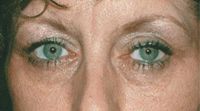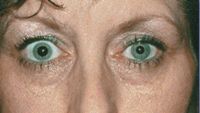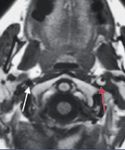Article
Acute orbital, periorbital pain may signal arterial dissection
Atlanta—Arterial dissection can be overlooked in a patient who presents to an ophthalmologist with acute orbital or periorbital pain. Val?rie Biousse, MD, described the appropriate steps to take to ensure an accurate diagnosis and avoid a subsequent cerebral insult.

Dr. Biousse reported a representative case.
A 30-year-old woman presented to a neurologist with a right hemiparesis. The medical history included migraine with aura. Two weeks before presentation, the patient had ridden a roller coaster. One day later, she developed left-sided head and neck pain and positive visual phenomena that she described as mobile flashing black dots and blurred vision in the left eye.

Two days later, the headache and visual symptoms resolved. However, upon awakening the following day, the patient had a right hemiparesis. Upon hospital admission, the patient was unable to walk but had no pain and ocular examination was remarkable for mild ptosis on the left and anisocoria, with the right pupil slightly larger in the dark than the left in light, which suggested a left-sided Horner's syndrome.
"Acute, painful Horner's syndrome in general should suggest a lesion of the sympathetic pathway at the level of the internal carotid artery. Such a lesion should raise the possibility of internal carotid artery dissection," Dr. Biousse emphasized. She is associate professor of ophthalmology and neurology, department of ophthalmology, Emory University School of Medicine, Atlanta.

She pointed out that on MRI, the normal internal carotid artery appears black because of the flow void; the hematoma within the dissected artery appears on MRI as a white crescent. There was also a hyposignal in the middle cerebral artery because of the severe stenosis, which suggested very poor distal blood flow that resulted in a hemodynamic infarction of the ipsilateral brain.
The important point to be garnered from that case, Dr. Biousse pointed out, was that not every patient who presents with positive visual phenomena has a migraine.

Clinical pearls "Dissections usually belong in the realm of the neurologists, but ophthalmologists should be aware of them and at least raise the possibility of such an event occurring in your patient," she stated.
Dr. Biousse suggested that the ophthalmologist who did the first examination of the patient should have thought about a possible cerebral insult, looked for Horner's syndrome, sent the patient to the emergency department the same day, and requested that emergency department personnel arrange for a neurologic examination.
Newsletter
Don’t miss out—get Ophthalmology Times updates on the latest clinical advancements and expert interviews, straight to your inbox.




